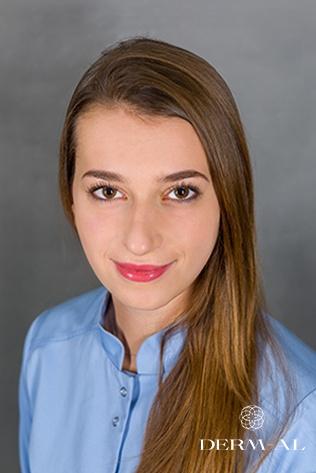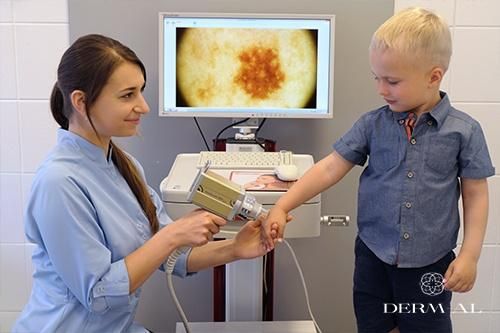- Procedure Description
-
At Derm-Al Center, skin lesions are surgically removed for medical, preventive, and aesthetic reasons.
Skin lesions eligible for surgical removal include:
- pigmented moles ("beauty marks")
- precancerous lesions and skin cancers
- lipomas
- fibromas
- viral warts (common, flat)
- genital warts (condylomas acuminata)
- seborrheic keratoses
- xanthelasma
- hypertrophic scars (keloids)
- xanthomas
For some skin lesions, the doctor may decide to use methods other than traditional surgery, such as cryosurgery for warts, radio-surgery or electrocoagulation for fibromas. Skin lesions requiring histopathological examination must be removed surgically, including pigmented moles.
Pigmented moles, commonly known as "beauty marks," occur frequently on the skin, especially in the white population. Some individuals have numerous moles, and their number increases with age. The tendency to develop moles is usually hereditary. In some moles, benign structures can transform into cancerous structures (malignant tumor - melanoma). The risk of transformation increases with skin aging and excessive exposure to sunlight, exposure to direct chemical agents (e.g., herbicides, fungicides, petroleum derivatives, arsenic, hydrocarbons), smoking, or chronic local skin irritation. Therefore, regular monitoring of moles by the patient and a dermatologist is extremely important.
Derm-Al Center is equipped with a modern videodermatoscope, allowing precise examination of moles enlarged on a monitor, computer analysis for malignancy, archiving of examinations, and comparison of changes over time. Additionally, macro photos of the skin surface enable quick detection of new moles.
The best prevention against the development of skin lesions (pre-cancerous stage) into malignancy is their removal.
Indications for mole removal include:- moles with asymmetrical or irregular and uneven borders,
- moles with dark color or multiple colors,
- moles larger than 6 mm in diameter,
- appearance of a new mole,
- change in the appearance, structure, or size of a mole,
- itching or bleeding mole.
Procedure Technique:
At Derm-Al Center, the procedure for removing pigmented moles or larger lesions requiring sutures is performed by a general surgeon or plastic surgeon. The procedure is carried out under local anesthesia using a 1% or 2% Lignocaine injection, making it completely painless. Depending on the size and depth of the lesion, the surgeon applies the appropriate type and number of surgical sutures and dressing. After the procedure, the patient receives instructions on when to change or remove the dressing and when to return for suture removal, as well as recommendations for further care. The patient can return home immediately after the procedure. Each excised lesion undergoes histopathological examination.
-

Marta Walikowska
Specialist Surgeon (doctor in specialization), performing aesthetic medicine procedures
Wednesday 18:30 – 21:00

Monika Wojarska
Specialist Pediatric Surgeon, Specialist Plastic Surgeon






